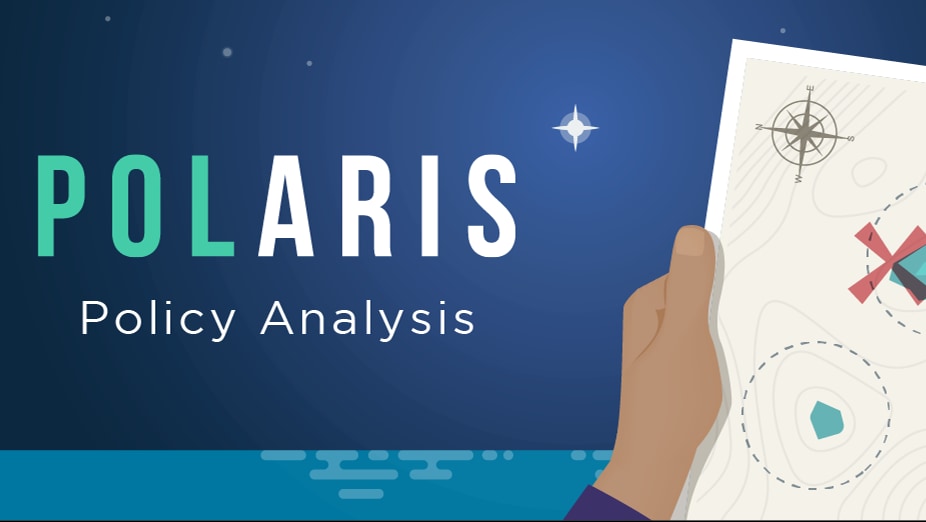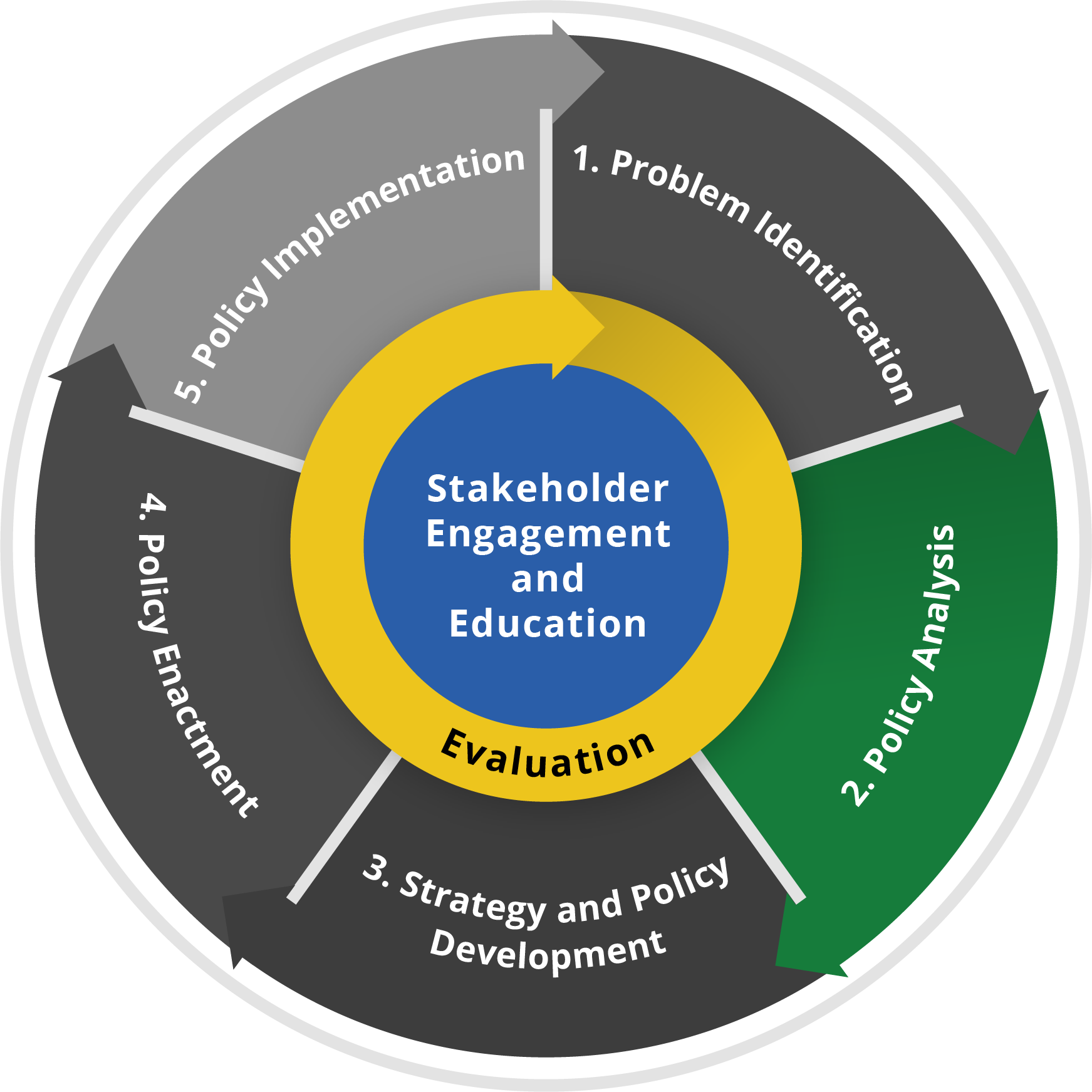What to know
Policy Analysis is the process of identifying potential policy options that could address a problem and comparing those options to choose the most effective, efficient, and feasible one.

Introduction
If you have clearly defined your problem and created a problem statement, you belong here. If not, see Problem Identification to learn how to complete the first step of the policy process.
Conducting a policy analysis ensures you have gone through a systematic process to select a policy option. Consider possible policy options and determine whether they will work well in your situation.

Who to include in the process
Partners and Specialist
Include people who can provide and/or interpret policy information in your policy analysis process.
- Subject matter experts
- Economists
- Community Partners
How can they contribute
- Provide and interpret information you need for your policy analysis
People affected by the policy
Include people whose jobs or lives might be affected by the policy.
- Community members
- Community partners
- Local decision makers
How can they contribute?
- Provide contextual knowledge, such as potential social, educational, and cultural perspectives
People who administer resources
Include public officials and administrators.
How can they contribute?
Include these stakeholders during the policy analysis process to help you understand the potential economic and/or budgetary impacts of the policy options being considered. They can also help you understand the legal landscape around the potential policies
You may want assistance from an economist or researcher when complex calculations are needed to determine some impacts.
How to conduct a policy analysis?
1. Research and identify possible policy options
You can do this by reviewing research literature, conducting an environmental scan, and surveying best practices to understand what other communities are doing.
2. Describe the possible policy options.
As you conduct your policy analysis, pay attention to the health impact, cost of implementation, and feasibility of each option. To describe these three factors, you can ask yourself and your stakeholders questions such as:
- What population(s) will be affected by each policy option? By how much? And when?
- What is the context around the possible policy options, including political history, environment, and policy debate?
- What are the costs and benefits associated with each policy option from a budgetary perspective?
When you are assessing feasibility, it is important to identify any barriers that could prevent a policy from being developed, enacted, or implemented. A policy might be more feasible in one city or at a certain time, but not others. You might find that as circumstances change, what is considered affordable or publicly acceptable may change with them.
3. Rank the possible policy options and pick the one you think is best.
Compare the policy options for health impact, economic and budgetary impact, and feasibility. Next, rank each one based on those criteria. Stakeholders can provide guidance on how to do this. Your rankings will always be partially subjective, so it helps to systematically document your rationale. In some cases, your review may reveal a clear winner—a policy that is
- Feasible
- Has a strong, positive impact on public health
- Is economically and fiscally viable.
In other cases, ranking the options may be more complicated and involve assessing trade-offs.
For example, when considering policies for reducing smoking, there are trade-offs related to feasibility and impact between options. (Feasibility and impact depends on your context, like your location.) You may have to have choose between a more feasible policy (like an indoor smoking ban for restaurants) and one with more widespread impact (like raising prices on tobacco products in your state).
Literature review
An examination of the current body of research about your policy problem (and can include possible policy options). This kind of review may help you identify what is already known about the policy options as well as any gaps in the current research.
Environmental scan
A proactive, systematic collection of information about events, trends, and expectations of what you might encounter during the policy process.
Learn more– See CDC's Policy Analysis Worksheet for more examples of questions you can use in your policy analysis.
How to determine a policy analysis is complete?
- You researched and identified possible policy options with a literature review, environmental scans, and surveys of best practices
- You described possible policy options, including each one's health impact, cost of implementation, and feasibility
- You ranked each policy option based on health impact, economic and budgetary impact, and feasibility—and then chose the one you think is best for your situation
Resources
Key Policy Analysis Questions: This worksheet provides questions that form a framework for your policy analysis.
Policy Analysis Table: This organizational table can help you assess each policy option against set criteria and then to compare policy options.
